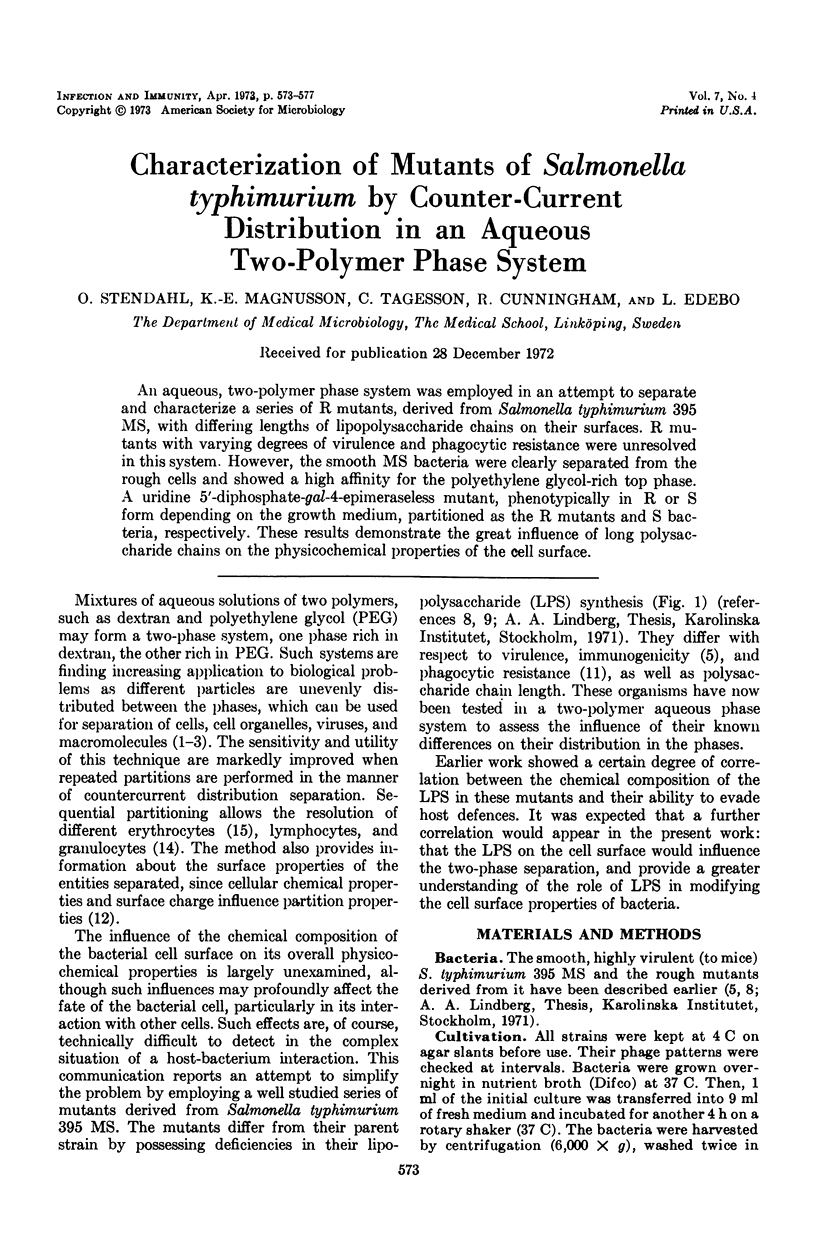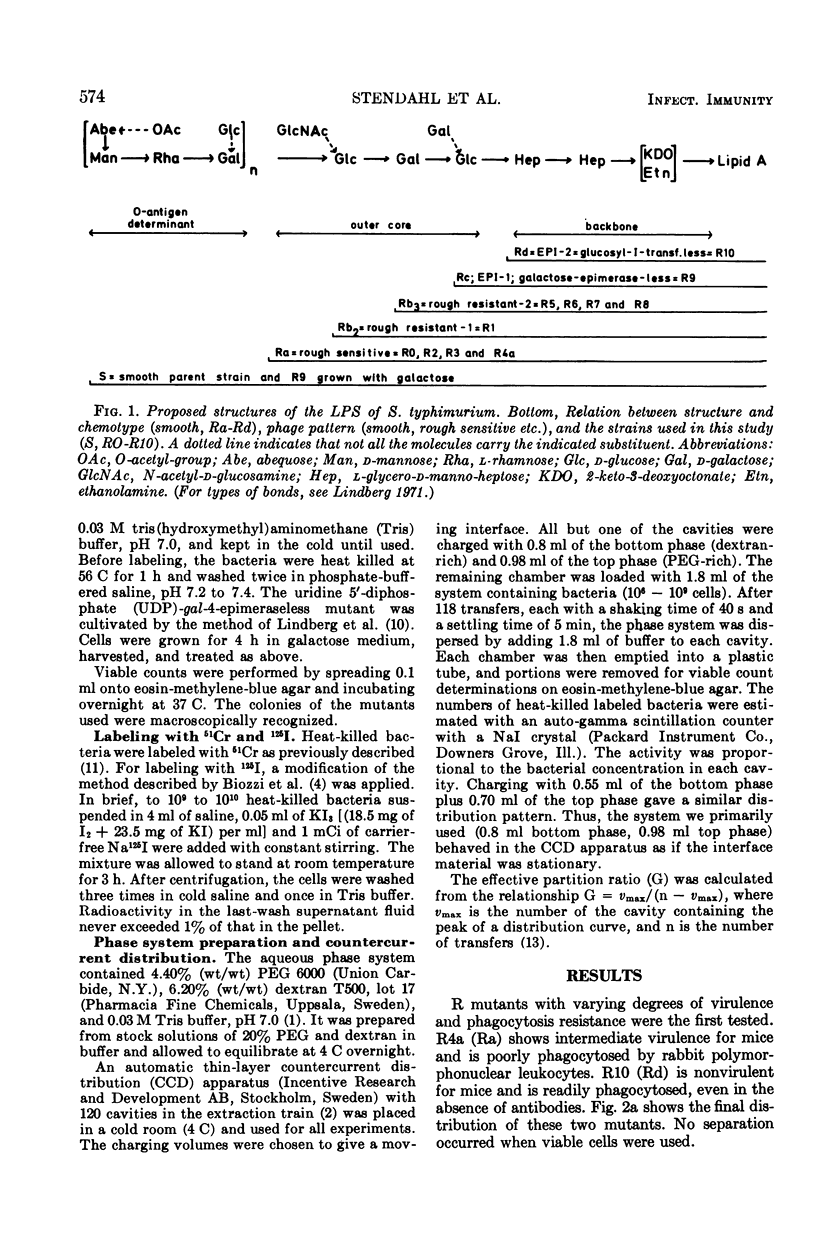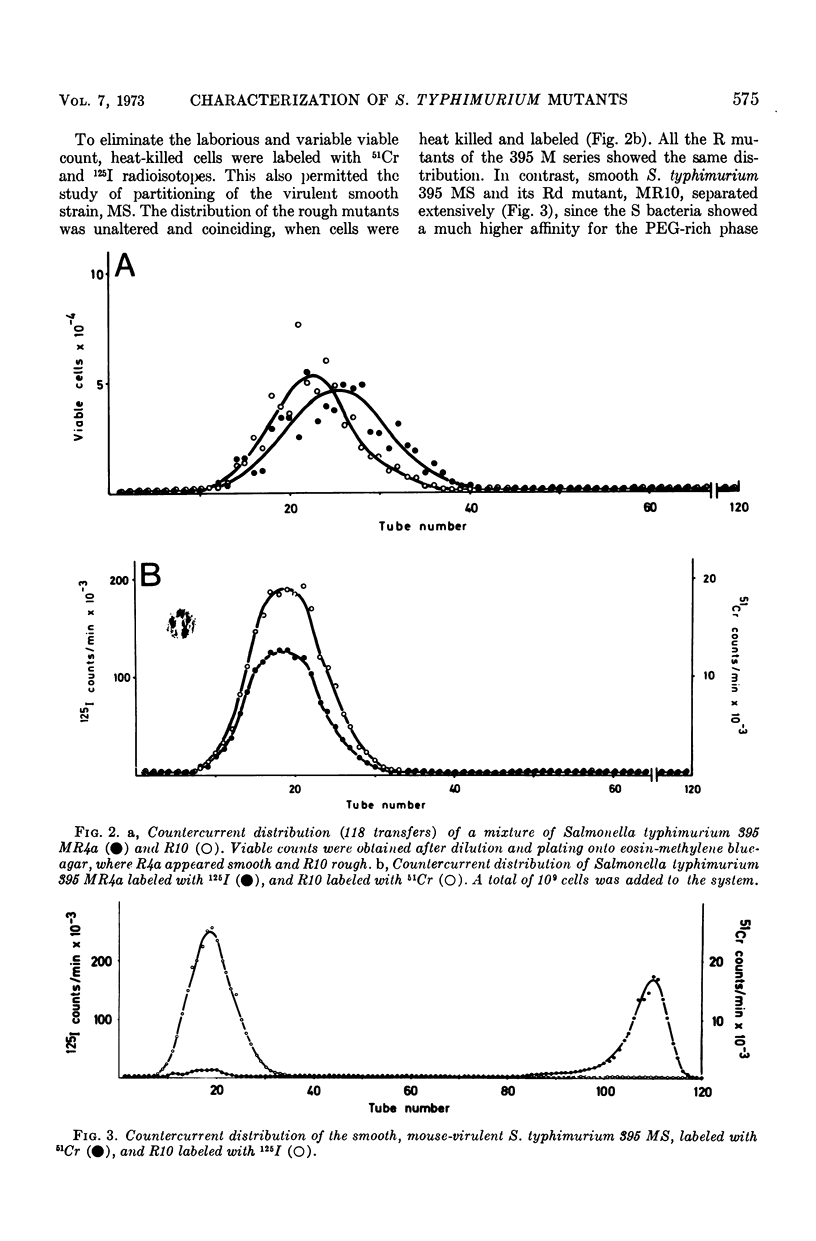Abstract
An aqueous, two-polymer phase system was employed in an attempt to separate and characterize a series of R mutants, derived from Salmonella typhimurium 395 MS, with differing lengths of lipopolysaccharide chains on their surfaces. R mutants with varying degrees of virulence and phagocytic resistance were unresolved in this system. However, the smooth MS bacteria were clearly separated from the rough cells and showed a high affinity for the polyethylene glycol-rich top phase. A uridine 5′-diphosphate-gal-4-epimeraseless mutant, phenotypically in R or S form depending on the growth medium, partitioned as the R mutants and S bacteria, respectively. These results demonstrate the great influence of long polysaccharide chains on the physicochemical properties of the cell surface.
Full text
PDF




Selected References
These references are in PubMed. This may not be the complete list of references from this article.
- ALBERTSSON P. A., BAIRD G. D. Counter-current distribution of cells. Exp Cell Res. 1962 Nov;28:296–322. doi: 10.1016/0014-4827(62)90285-9. [DOI] [PubMed] [Google Scholar]
- Albertsson P. A. Partition of cell particles and macromolecules in polymer two-phase systems. Adv Protein Chem. 1970;24:309–341. doi: 10.1016/s0065-3233(08)60244-2. [DOI] [PubMed] [Google Scholar]
- BIOZZI G., HOWARD J. G., HALPERN B. N., STIFFEL C., MOUTON D. The kinetics of blood clearance o isotopically labelled Salmonella entertidis by the reticulo-endothelial system in mice. Immunology. 1960 Jan;3:74–89. [PMC free article] [PubMed] [Google Scholar]
- Edebo L., Normann B. Virulence and immunogenicity of mutant strains of Salmonella typhimurium. Acta Pathol Microbiol Scand B Microbiol Immunol. 1970;78(1):75–84. doi: 10.1111/j.1699-0463.1970.tb04271.x. [DOI] [PubMed] [Google Scholar]
- Friedberg D., Shilo M. Role of cell wall structure of salmonella in the interaction with phagocytes. Infect Immun. 1970 Sep;2(3):279–285. doi: 10.1128/iai.2.3.279-285.1970. [DOI] [PMC free article] [PubMed] [Google Scholar]
- Galanos C., Lüderitz O., Westphal O. A new method for the extraction of R lipopolysaccharides. Eur J Biochem. 1969 Jun;9(2):245–249. doi: 10.1111/j.1432-1033.1969.tb00601.x. [DOI] [PubMed] [Google Scholar]
- Lindberg A. A., Holme T., Hellerqvist C. G., Svensson S. Bacteriophage receptor development and synthesis of O-specific side chains after addition of D-galactose to the uridine diphosphate-galactose-4-epimeraseless mutant Salmonella typhimurium LT2-M1. J Bacteriol. 1970 May;102(2):540–547. doi: 10.1128/jb.102.2.540-547.1970. [DOI] [PMC free article] [PubMed] [Google Scholar]
- Stendahl O., Edebo L. Phagocytosis of mutants of Salmonella typhimurium by rabbit polymorphonuclear cells. Acta Pathol Microbiol Scand B Microbiol Immunol. 1972;80(4):481–488. doi: 10.1111/j.1699-0463.1972.tb00169.x. [DOI] [PubMed] [Google Scholar]
- Walter H., Edgell M. H., Hutchison C. A., 3rd Separation of bacteriophage phiX174 mutants by countercurrent distribution in a two-polymer acqueous phase system. Biochim Biophys Acta. 1970 Mar 19;204(1):248–251. doi: 10.1016/0005-2787(70)90508-3. [DOI] [PubMed] [Google Scholar]
- Walter H., Krob E. J., Ascher G. S. Separation of lymphocytes and polymorphonuclear leukocytes by countercurrent distribution in aqueous two-polymer phase systems. Exp Cell Res. 1969 May;55(2):279–283. doi: 10.1016/0014-4827(69)90494-7. [DOI] [PubMed] [Google Scholar]
- Walter H., Selby F. W. Counter-current distribution of red blood cells of slightly different ages. Biochim Biophys Acta. 1966 Jan 4;112(1):146–153. doi: 10.1016/s0926-6585(96)90016-3. [DOI] [PubMed] [Google Scholar]


